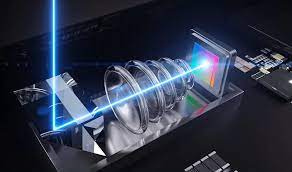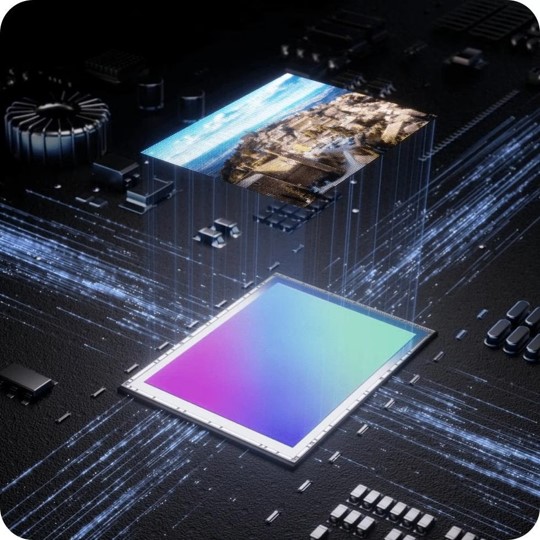Samsung is charting a course toward revolutionizing camera technology by integrating artificial intelligence (AI) directly into its image sensors. This ambitious initiative, internally dubbed “Humanoid Sensors,” aims to replicate human vision by 2027. This move comes in the wake of SK Hynix’s unveiling of a camera sensor with an integrated AI processing chip. Quite indicative of the industry’s shift towards on-sensor AI processing.
Also Read: Samsung to Unveil AI-Powered Kitchen at CES 2024
Humanoid Sensors – Transforming Camera Image Sensors with AI
Samsung’s internal project, “Humanoid Sensors,” envisions a future where AI is seamlessly integrated into camera image sensors. This surpasses traditional methods that rely on a device’s CPU for image processing. Unlike conventional sensors, AI-integrated sensors process data directly at the sensor level, promising enhancements in image quality and reduced latency. Moreover, it also lowers the power consumption. The goal is to create sensors capable of mimicking human senses, potentially reaching up to 500 to 600 megapixels by 2027.

Samsung’s Short-Term Plans – AI Tools for Galaxy Smartphones
As part of its immediate plans, Samsung is rumored to introduce AI features, akin to those seen in the Google Pixel 8 series, to its Galaxy smartphone series. These features include generating wallpapers using keyword combinations, rearranging objects within images using AI, and empowering users to expand images beyond their original borders. Additionally, the Samsung Notes app is poised to benefit from AI integration, offering auto-formatting for large paragraphs and generating summaries upon user prompts.
Also Read: Samsung Galaxy S24 Series Powered by Eureka AI to Launch in January 2024
The Race for AI Dominance in Camera Sensors
Samsung, currently the second-largest smartphone camera sensor brand, with a 29% market share, aims to leverage AI to surpass the current market leader, Sony. The company’s focus on ‘On-Sensor AI’ aims to detect invisible objects and extend sensor capabilities beyond conventional megapixel ranges. This strategic move aligns with Samsung’s plans to lead the ‘Proactive AI’ era, incorporating generative AI, long-range communication solutions, and high-performance algorithms.
Making the Invisible Visible
Samsung’s innovative approach includes capturing ‘invisible’ elements by 2027, a goal that remains shrouded in mystery. Speculations suggest capabilities similar to FLIR thermal cameras or technologies enabling the capture of invisible information without specialized sensors. This commitment to making the invisible visible underscores Samsung’s dedication to pushing the boundaries of camera sensor capabilities.

Our Say
Samsung’s integration of AI into camera sensors marks a pivotal moment in the evolution of imaging technology. The shift towards on-sensor AI processing aligns with the company’s long-term vision of creating sensors that not only capture visible elements but replicate human senses. This convergence of AI and camera sensors presents exciting possibilities for the future of photography and imaging technology. Samsung’s commitment to advancing camera technology through AI integration signals a paradigm shift in the industry. It further sets the stage for transformative developments in the coming years.




